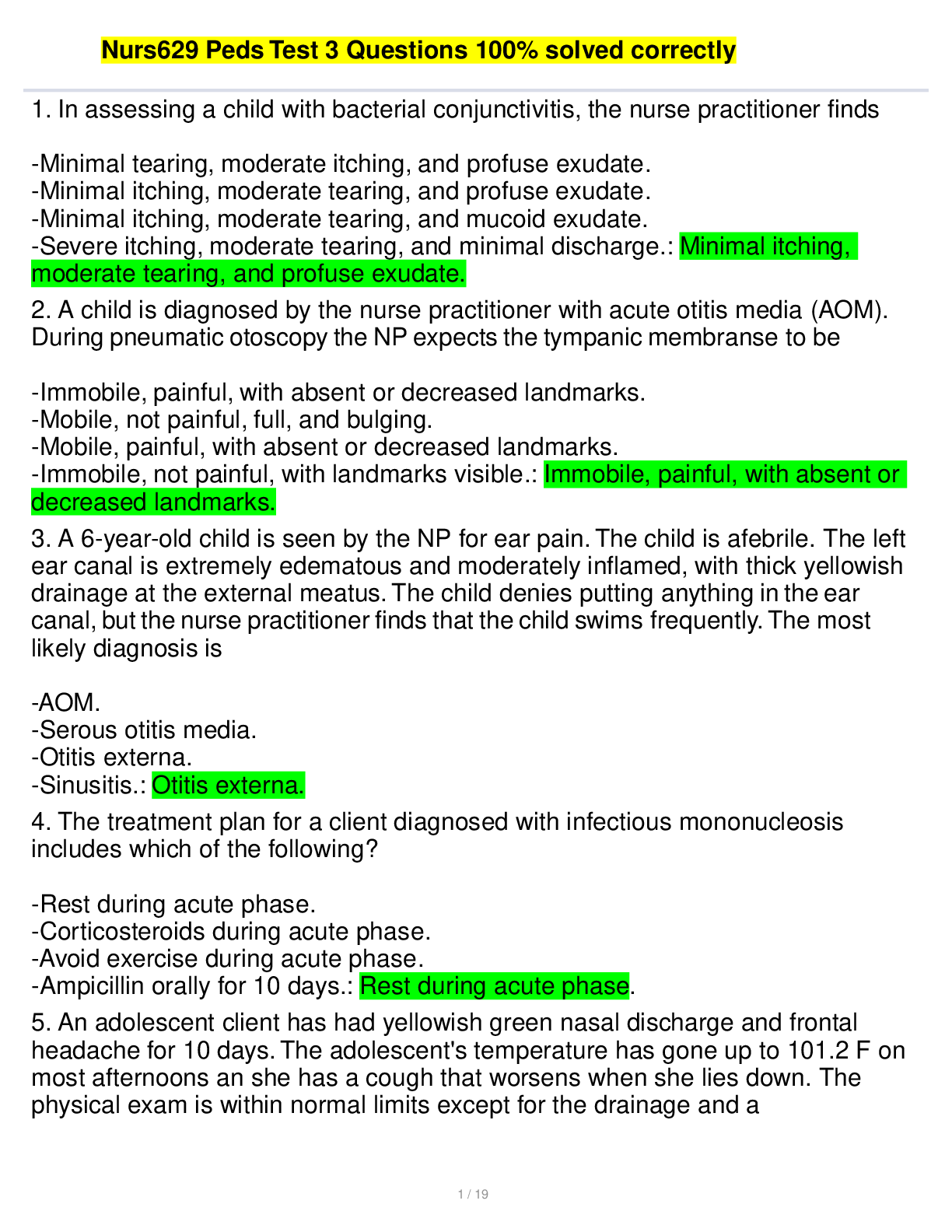*NURSING > EXAM > ABFM ITE 2018 Exam updated completely 100% solved correctly Grade A+ (with Explanation) 240Q (All)
ABFM ITE 2018 Exam updated completely 100% solved correctly Grade A+ (with Explanation) 240Q
Document Content and Description Below
ABFM ITE 2018 Exam completely 100% solved correctly Grade A+ (with Explanation) 240Q 1. A 68-year-old male presents to your office with a 2-day history of headache, muscle aches, and chills. His w... ife adds that his temperature has been up to 104.1°F and he seems confused sometimes. His symptoms have not improved with usual care, including ibuprofen and increased fluid intake. He and his wife returned from a cruise 10 days ago but don't recall anyone having a similar illness on the ship. This morning he started to cough and his wife was concerned because she saw some blood in his sputum. He also states that he experiences intermittent shortness of breath and feels nauseated. His blood pressure is 100/70 mm Hg, heart rate 98/min, temperature 39.4°C (102.9°F), and oxygen saturation 95% on room air. Which one of the following would be the preferred method to confirm your suspected diagnosis of Legionnaires' disease? A) Initiating azithromycin (Zithromax) to see if symptoms improve B) A chest radiograph C) Legionella polymerase chain reaction (PCR) testing D) A sputum culture for Legionella E) Urine testing for Legionella pneumophila antigen {{Correct Ans- E Explanation A urine test for Legionella pneumophila antigen is the preferred method to confirm Legionnaires' disease. This test is rapid and will only detect Legionella pneumophila antigen. A sputum culture is the gold standard for the diagnosis of Legionnaires' disease but it requires 48-72 hours. A chest radiograph does not confirm the diagnosis but may show the extent of disease. Responding to antibiotic treatment does not confirm a specific diagnosis. 2. Which one of the following factors related to pregnancy and delivery increases the risk of developmental dysplasia of the hip in infants? A) A large-for-gestational age infant B) Twin birth C) Breech presentation D) Cesarean delivery E) Premature birth {{Correct Ans- C Explanation Risk factors for developmental dysplasia of the hip in infants include a breech presentation in the third trimester, regardless of whether the delivery was cesarean or vaginal. Other indications to evaluate an infant for this condition include a positive family history, a history of previous clinical instability, parental concern, a history of improper swaddling, and a suspicious or inconclusive physical examination. Twin birth, a large-for-gestational age infant, and prematurity are not considered risk factors. 3. A healthy 2-month-old female is brought to your office for a routine well-baby examination by both of her parents, who have no concerns. The parents refuse routine recommended vaccines for their daughter because of their personal beliefs. You want to incorporate patient-centeredness and are also concerned about improving the health of the population. You decide to follow the CDC recommendations by A) accepting their decision without further action B) not offering vaccines at future visits to preserve a positive doctor-patient relationship C) having the parents sign a refusal to vaccinate form D) dismissing the family from the practice E) pursuing a court order for vaccine administration since the child has no medical exemptions {{Correct Ans- C Explanation Experts recommend that a refusal to vaccinate form be signed by patients or parents who refuse a recommended vaccine. This form should document that the patient/parents were provided the vaccine information statement (SOR C). The CDC recommends against dismissing a patient or family from a practice if they refuse vaccination. Physicians should continue to discuss the benefits of immunizations at subsequent visits, because some patients/parents may reconsider their decision not to vaccinate. 4. A 50-year-old male carpet layer presents with swelling of his right knee proximal to the patella. He does not have any history of direct trauma, fever, chills, or changes in the overlying skin. On examination, the site is swollen but minimally tender, with no warmth or erythema. Which one of the following would be most appropriate at this point? A) Rest, ice, and compression B) Aspiration of fluid for analysis C) Injection of a corticosteroid D) An oral corticosteroid taper E) Referral to an orthopedic surgeon for resection {{Correct Ans- A Explanation Prepatellar bursitis is a common superficial bursitis caused by microtrauma from repeated kneeling and crawling. Other terms for this include housemaid's knee, coal miner's knee, and carpet layer's knee. It is usually associated with minimal to no pain. This differs from inflammatory processes such as acute gouty superficial bursitis, which presents as an acutely swollen, red, inflamed bursa and, in rare cases, progresses to chronic tophaceous gout with minimal or no pain. The proper management of prepatellar bursitis is conservative and includes ice, compression wraps, padding, elevation, analgesics, and modification of activity. There is little evidence that a corticosteroid injection is beneficial, even though it is often done. If inflammatory bursitis is suspected, a corticosteroid injection may be helpful. Fluid aspiration is indicated if septic bursitis is suspected. Surgery can be considered for significant enlargement of a bursa if it interferes with function. 5. An 85-year-old female with a previous history of diabetes mellitus, hypertension, dementia, and peptic ulcer disease has been in a skilled nursing facility for 4 weeks for rehabilitation after a hip fracture repair secondary to a fall during an ischemic stroke. She is transported to the emergency department today when she develops confusion, shortness of breath, and diaphoresis. Her blood pressure is 172/98 mm Hg, her heart rate is 122 beats/min with an irregular rhythm, and her respiratory rate is 22/min. An EKG demonstrates atrial fibrillation and 0.2 mV ST-segment elevation compared to previous EKGs. Her first troponin level is elevated. Which one of the following conditions in this patient is considered an ABSOLUTE contraindication to fibrinolytic therapy? A) Poorly controlled hypertension B) Peptic ulcer disease C) Alzheimer's dementia D) Hip fracture repair E) Ischemic stroke {{Correct Ans- E Explanation A history of an ischemic stroke within the past 3 months is an absolute contraindication to fibrinolytic therapy in patients with an ST-elevation myocardial infarction (STEMI), unless the stroke is diagnosed within 41⁄2 hours. Poorly controlled hypertension, dementia, peptic ulcer disease, and major surgery less than 3 weeks before the STEMI are relative contraindications that should be considered on an individual [Show More]
Last updated: 2 years ago
Preview 1 out of 195 pages
Buy this document to get the full access instantly
Instant Download Access after purchase
Buy NowInstant download
We Accept:

Reviews( 0 )
$6.00
Can't find what you want? Try our AI powered Search
Document information
Connected school, study & course
About the document
Uploaded On
Sep 15, 2022
Number of pages
195
Written in
Additional information
This document has been written for:
Uploaded
Sep 15, 2022
Downloads
0
Views
71

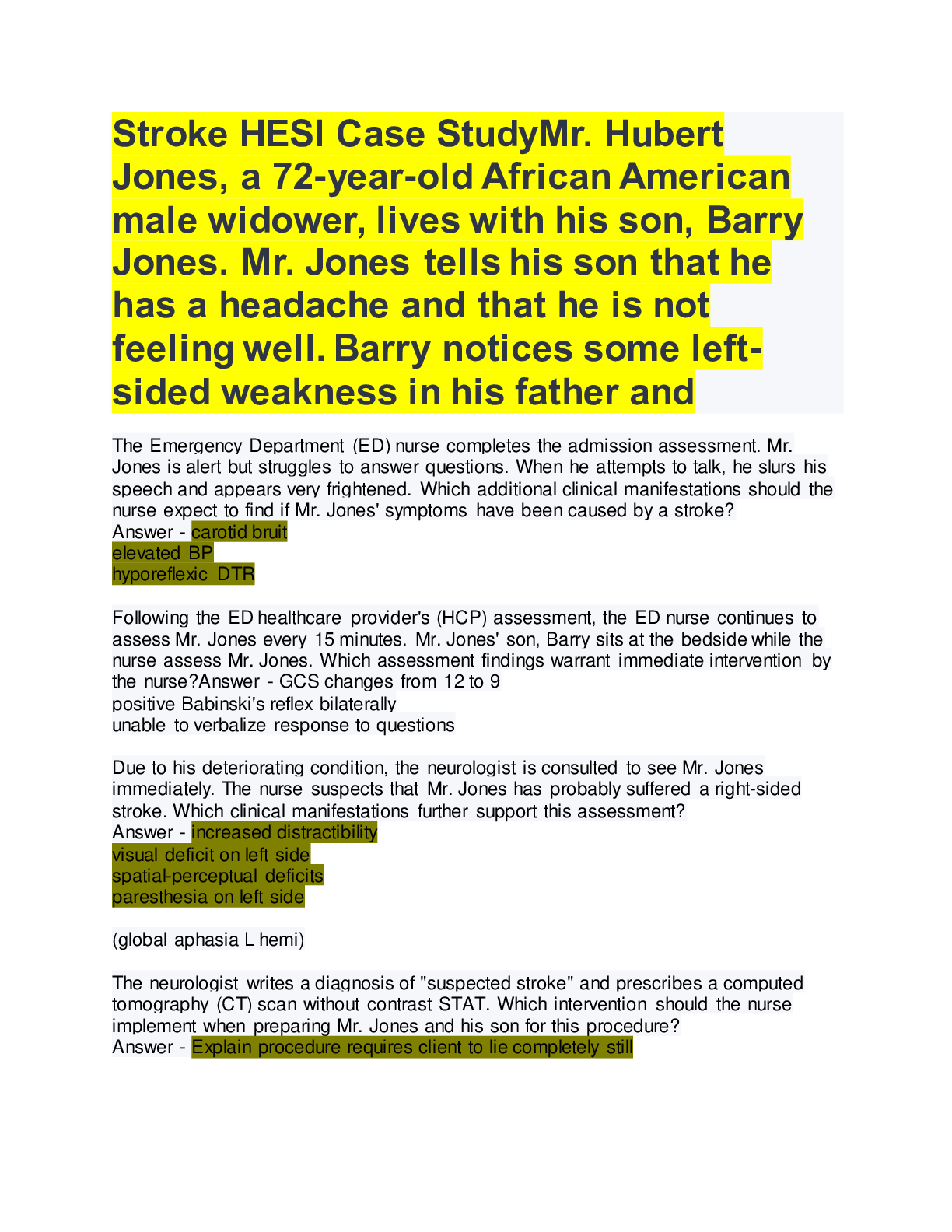
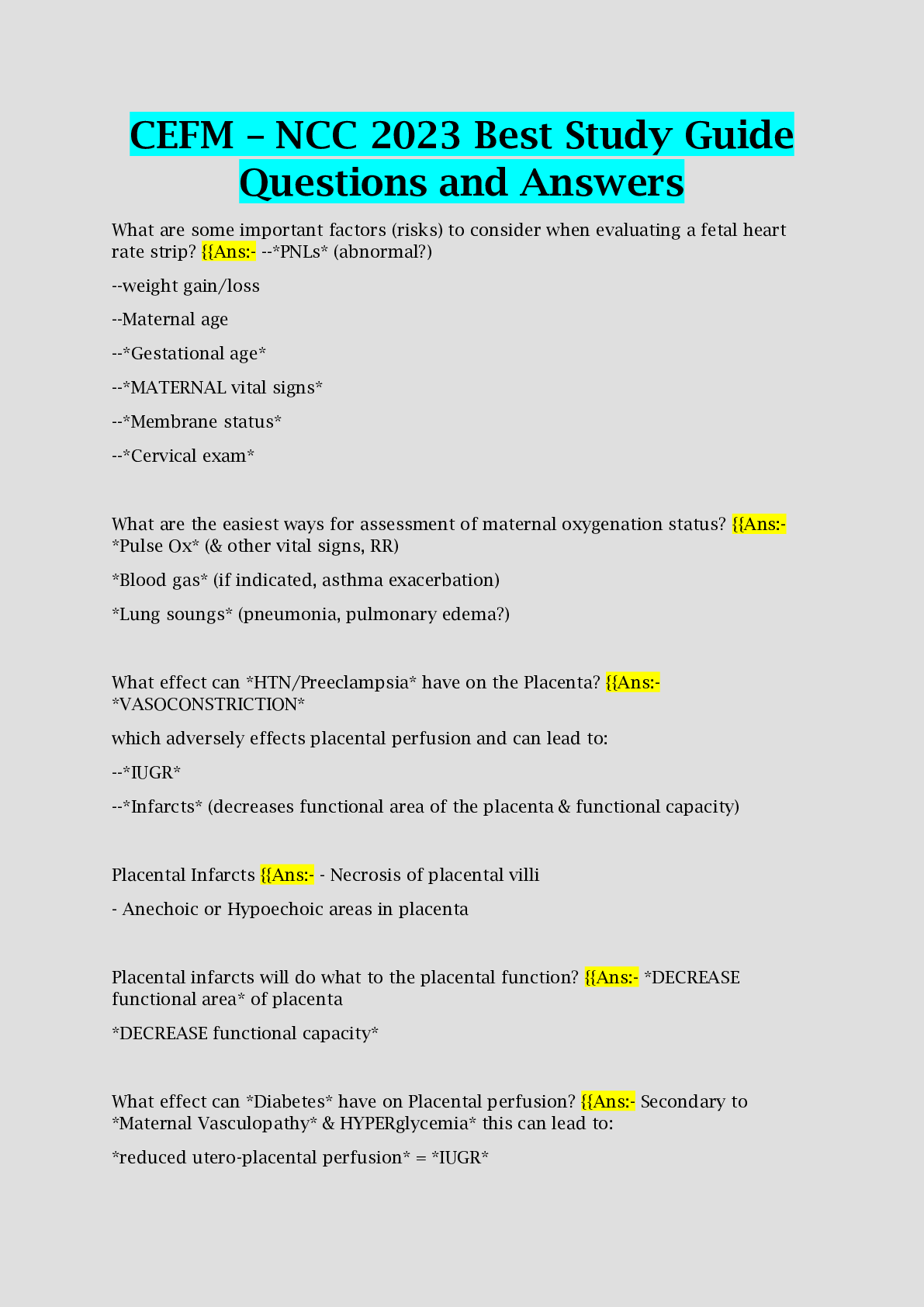
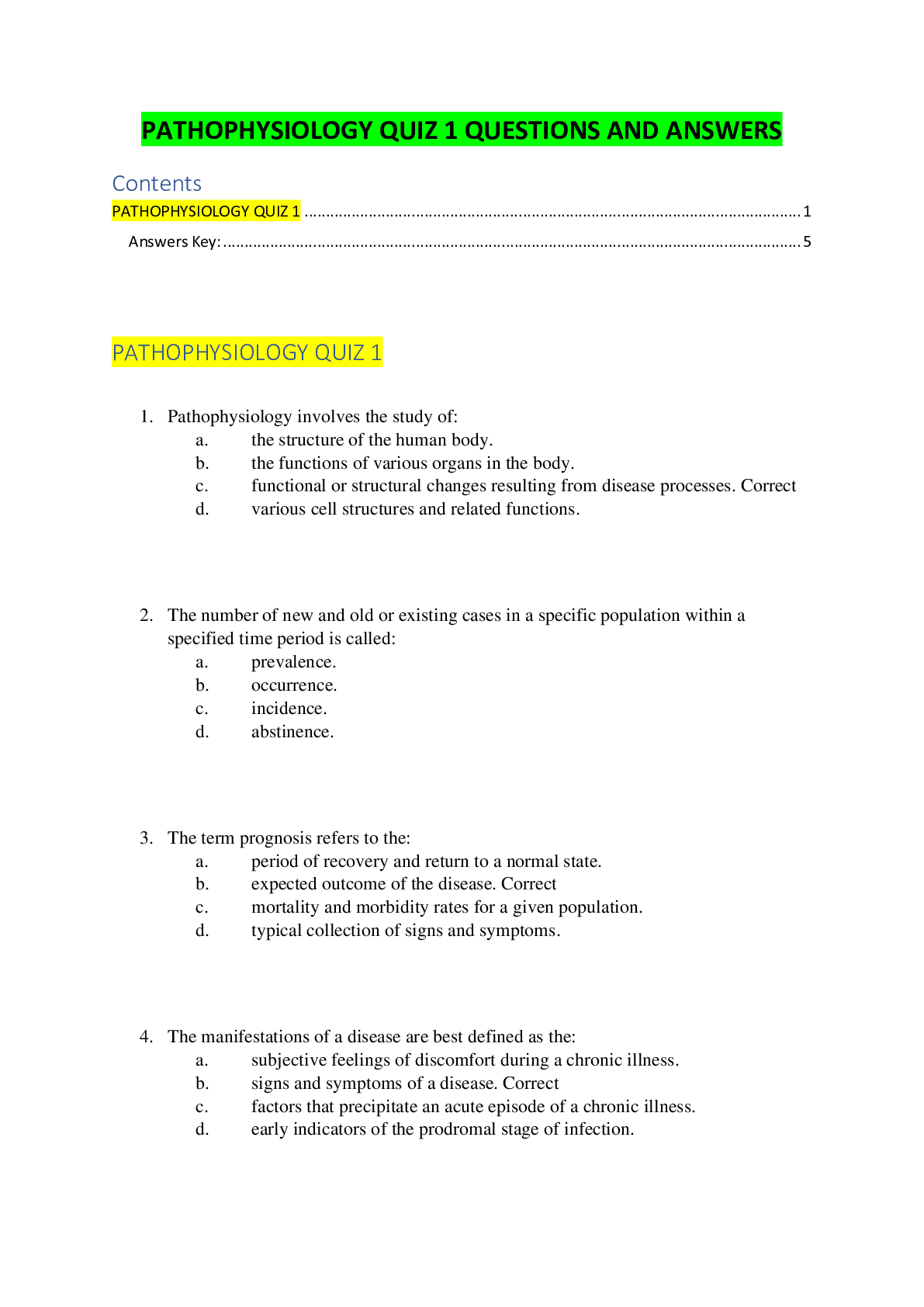
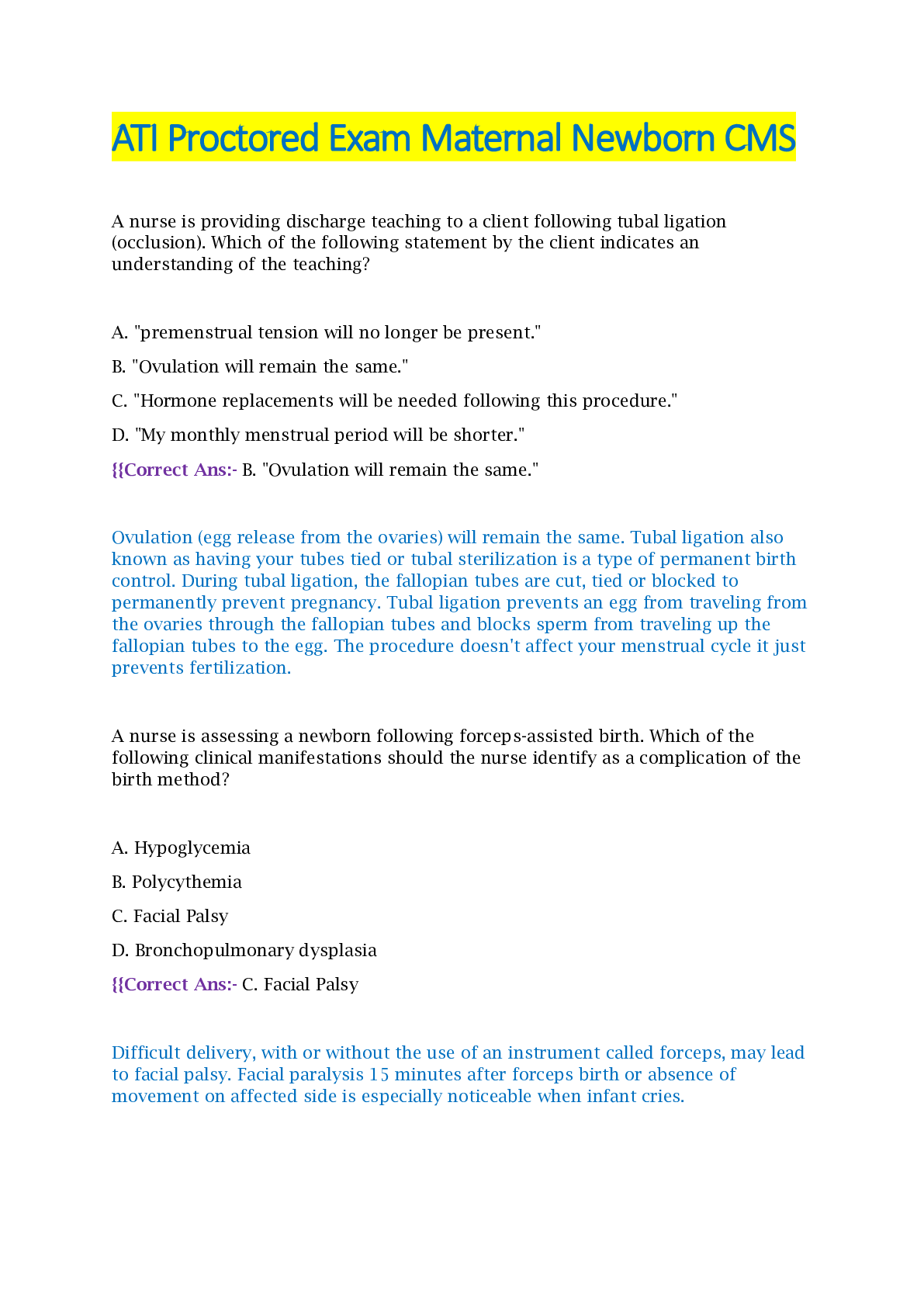
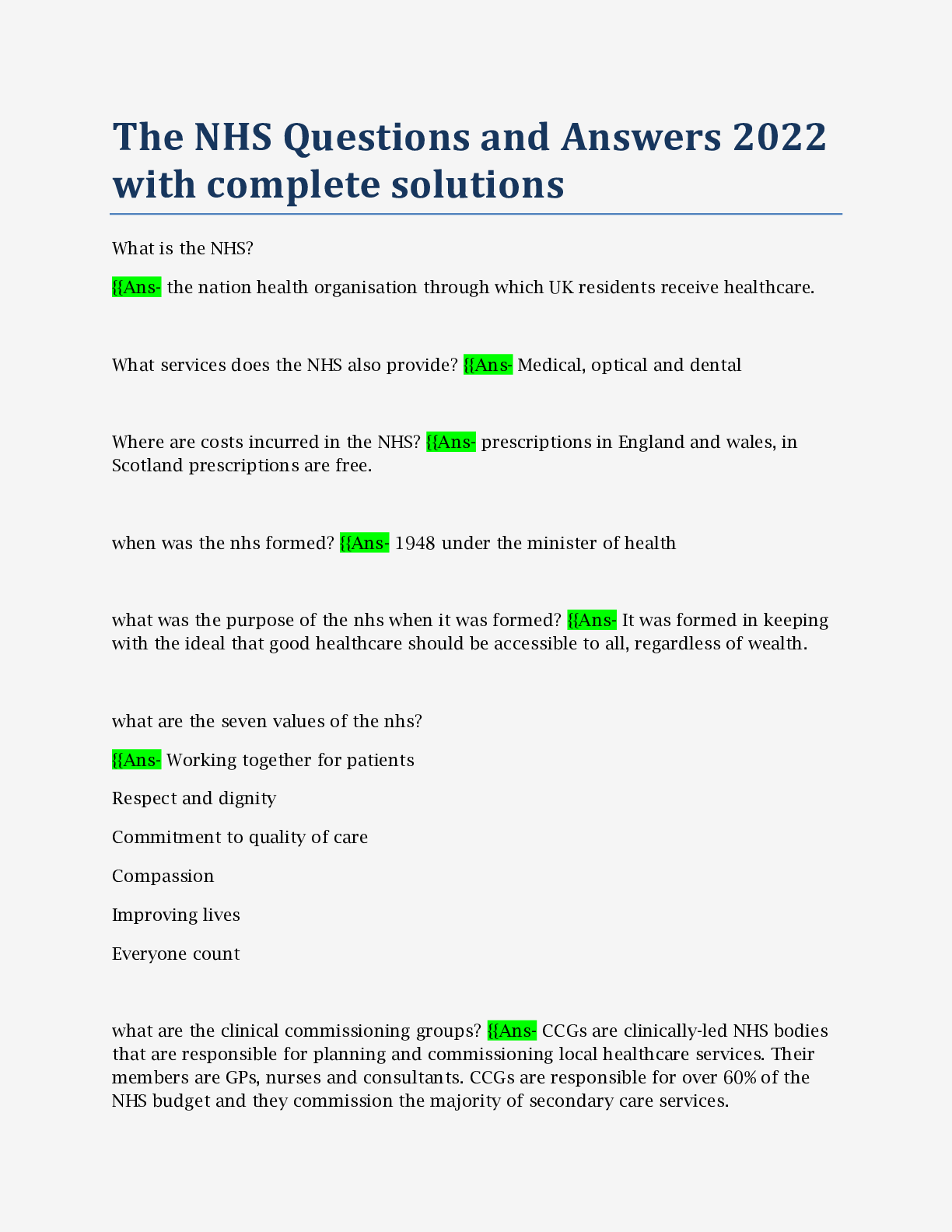
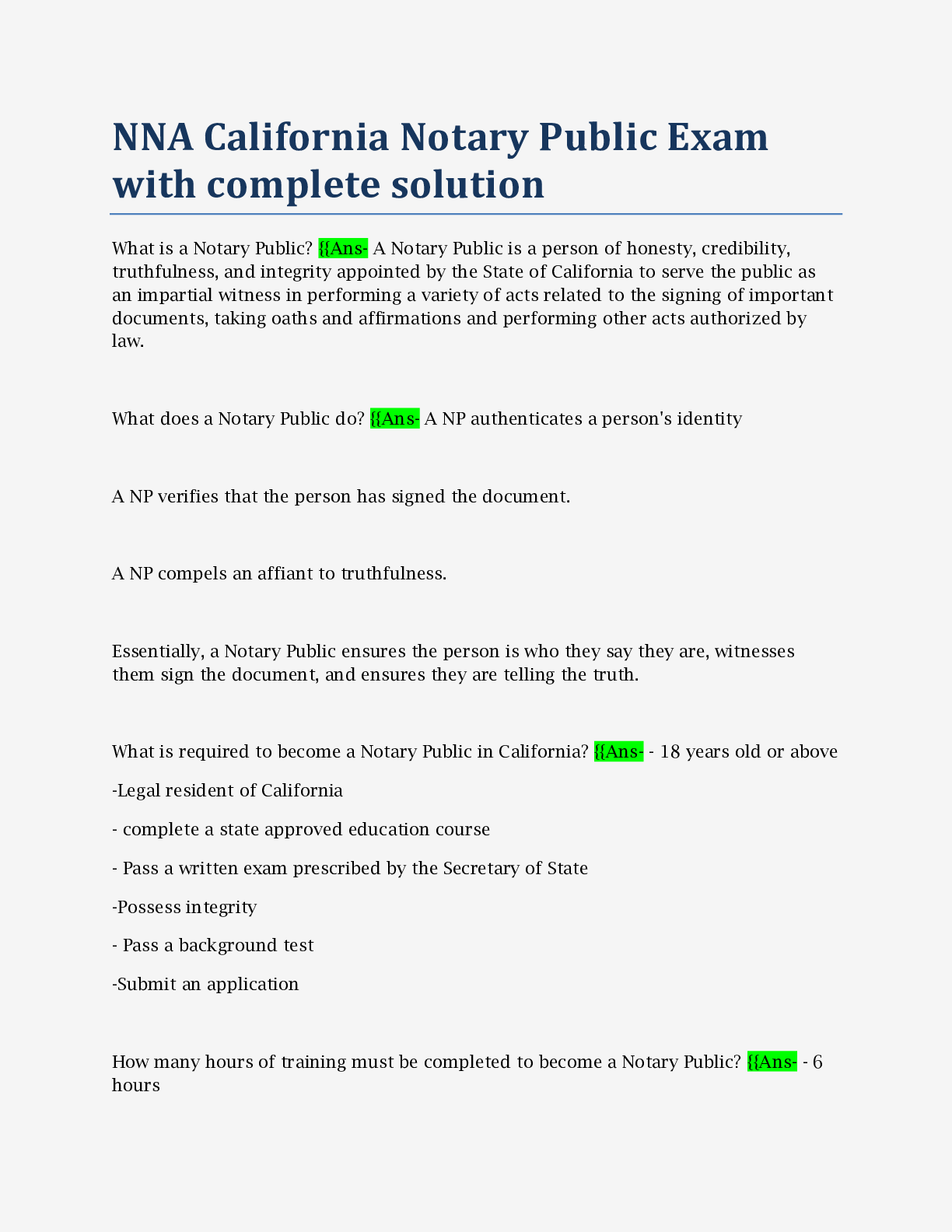



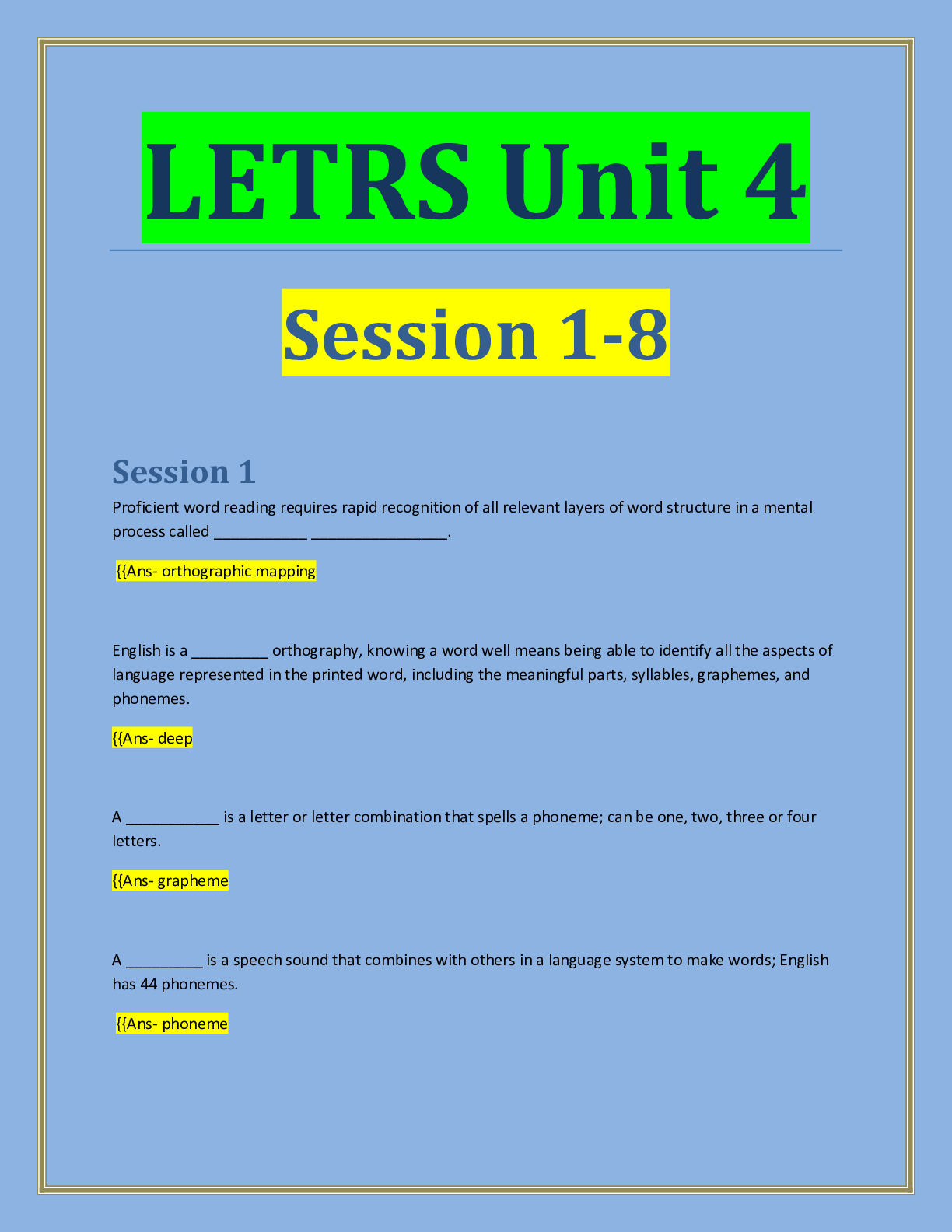

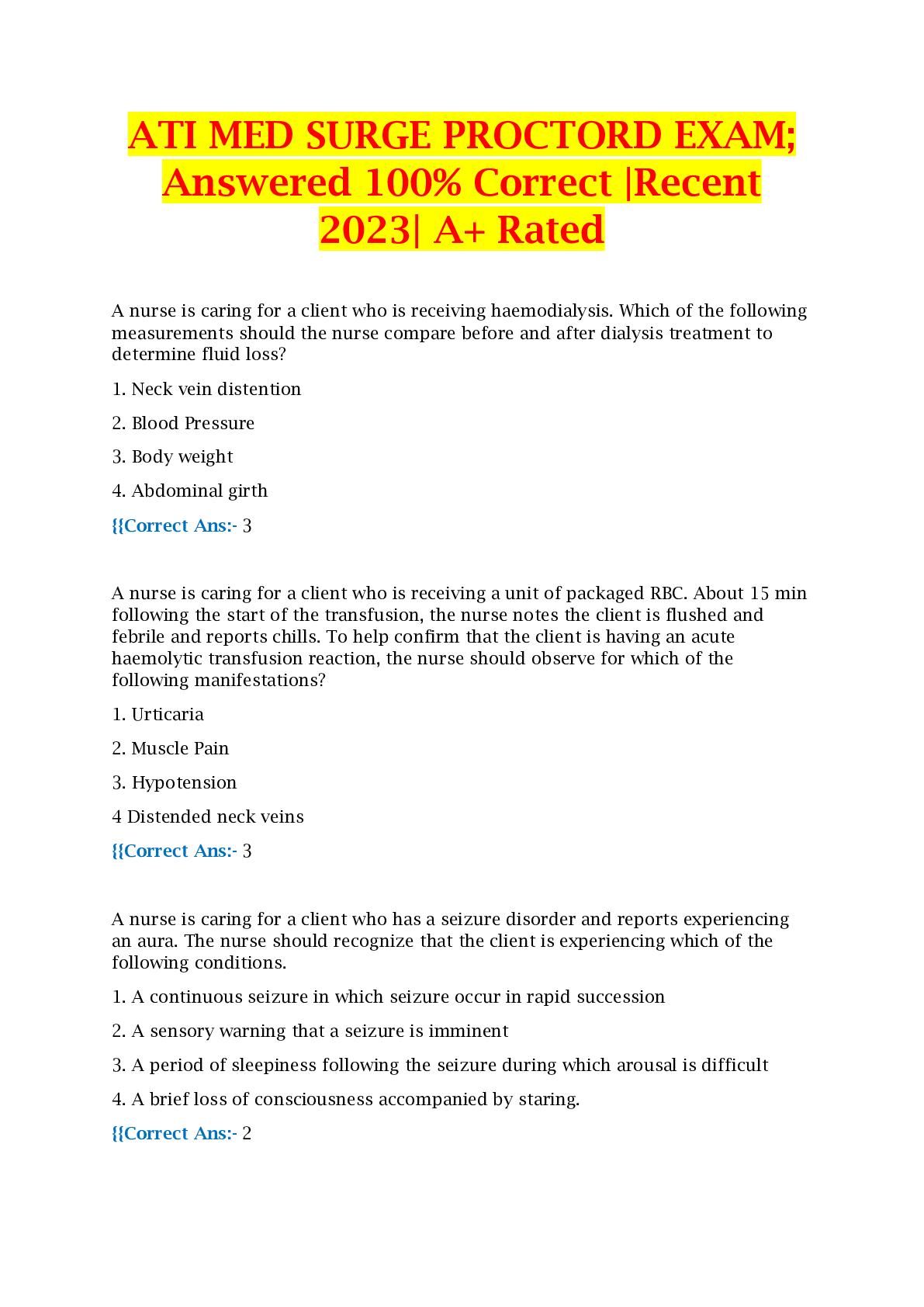
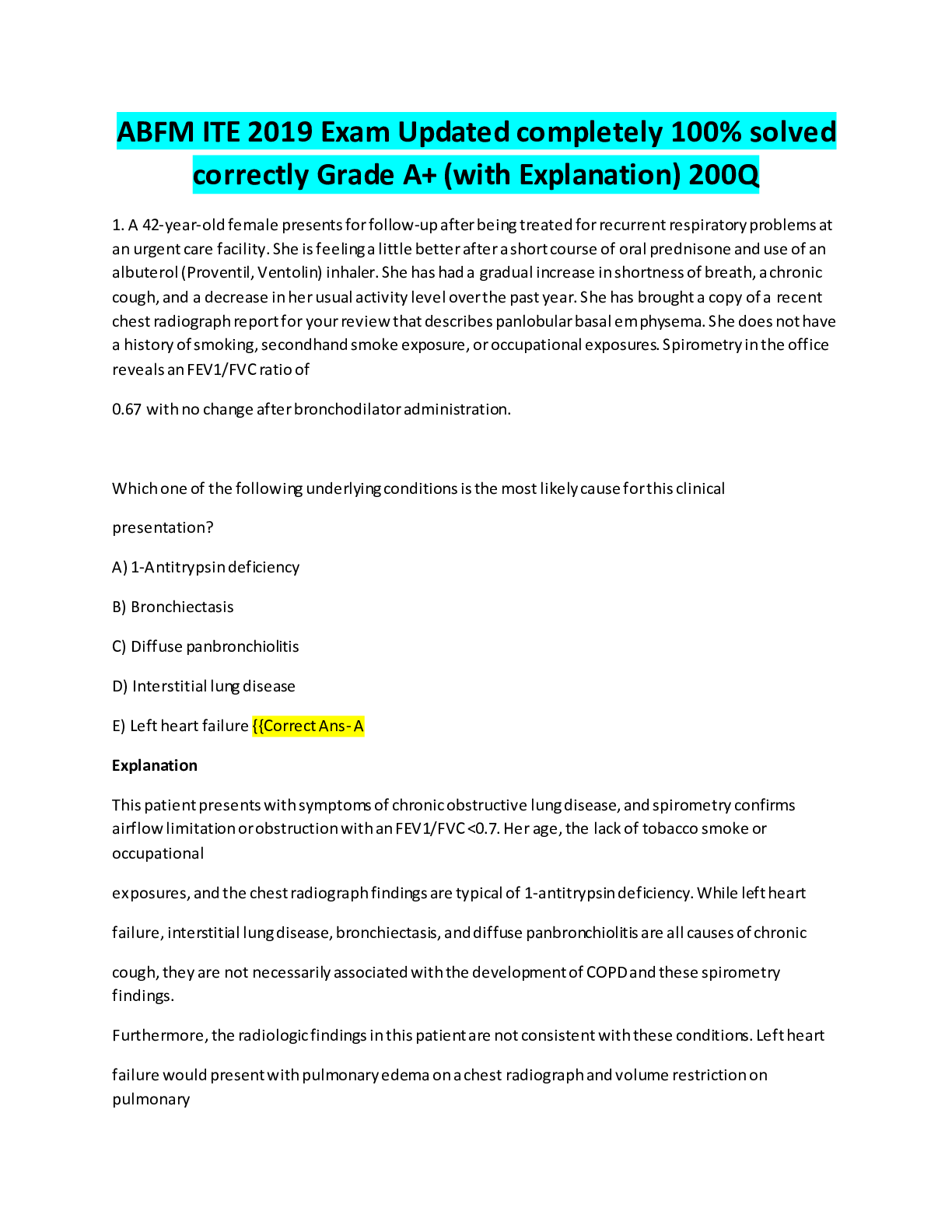
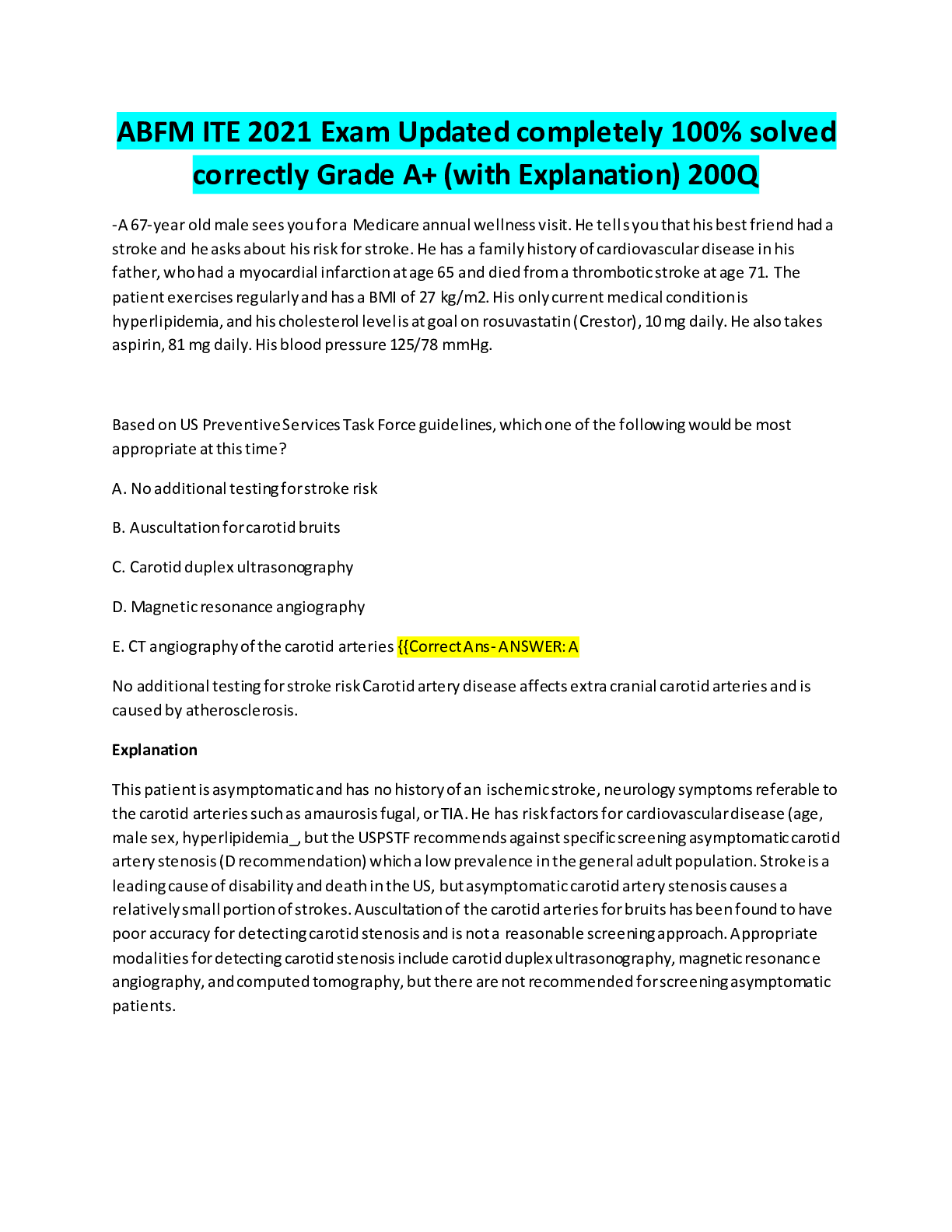
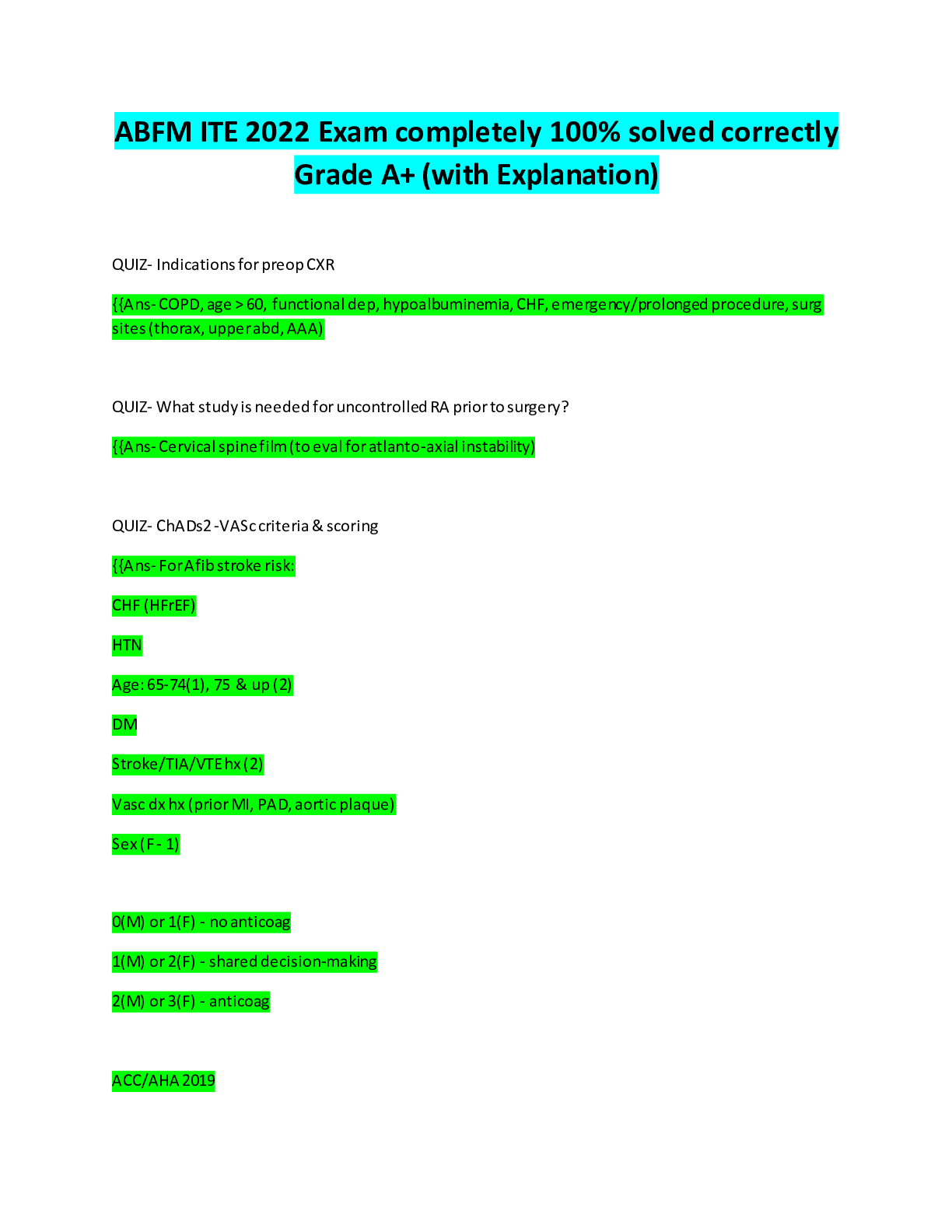
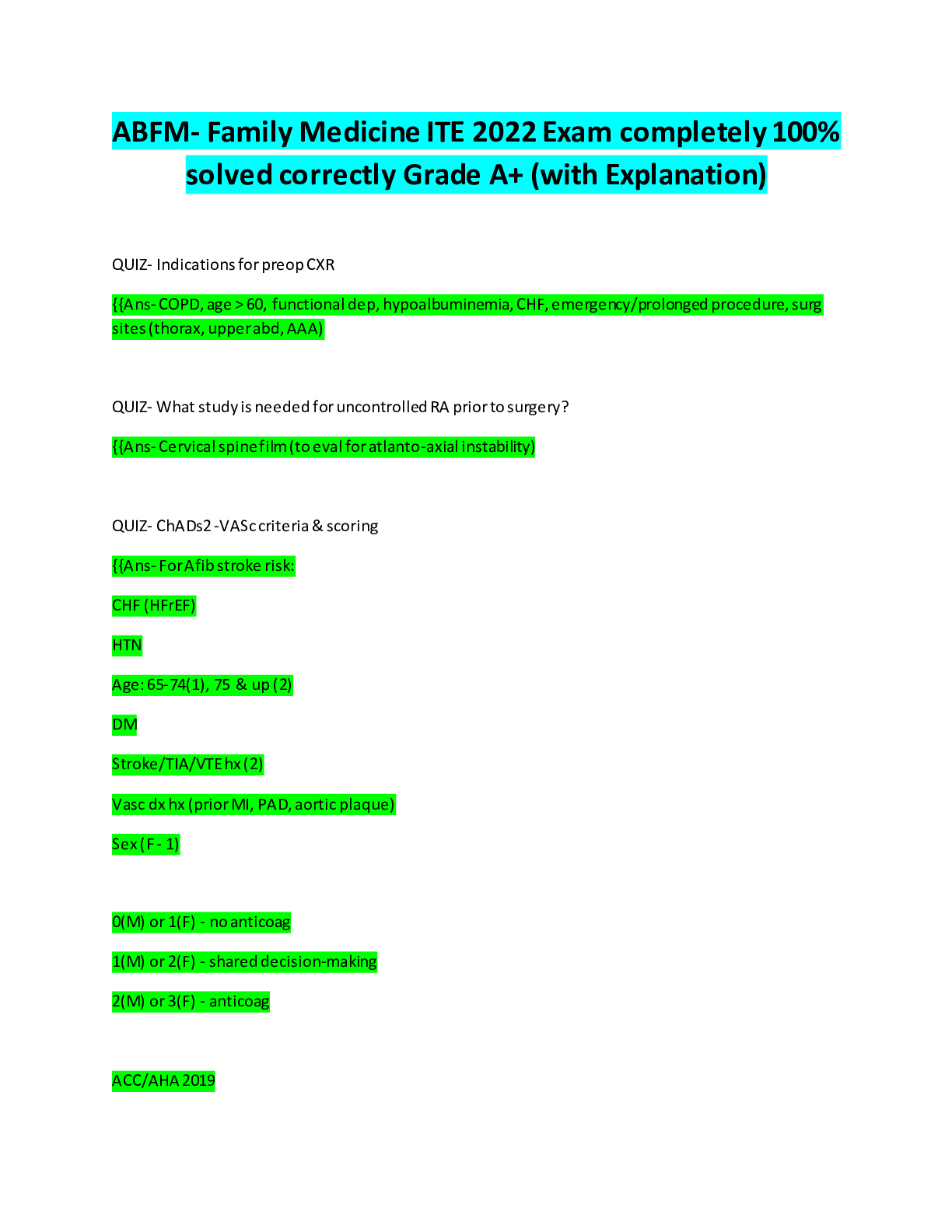
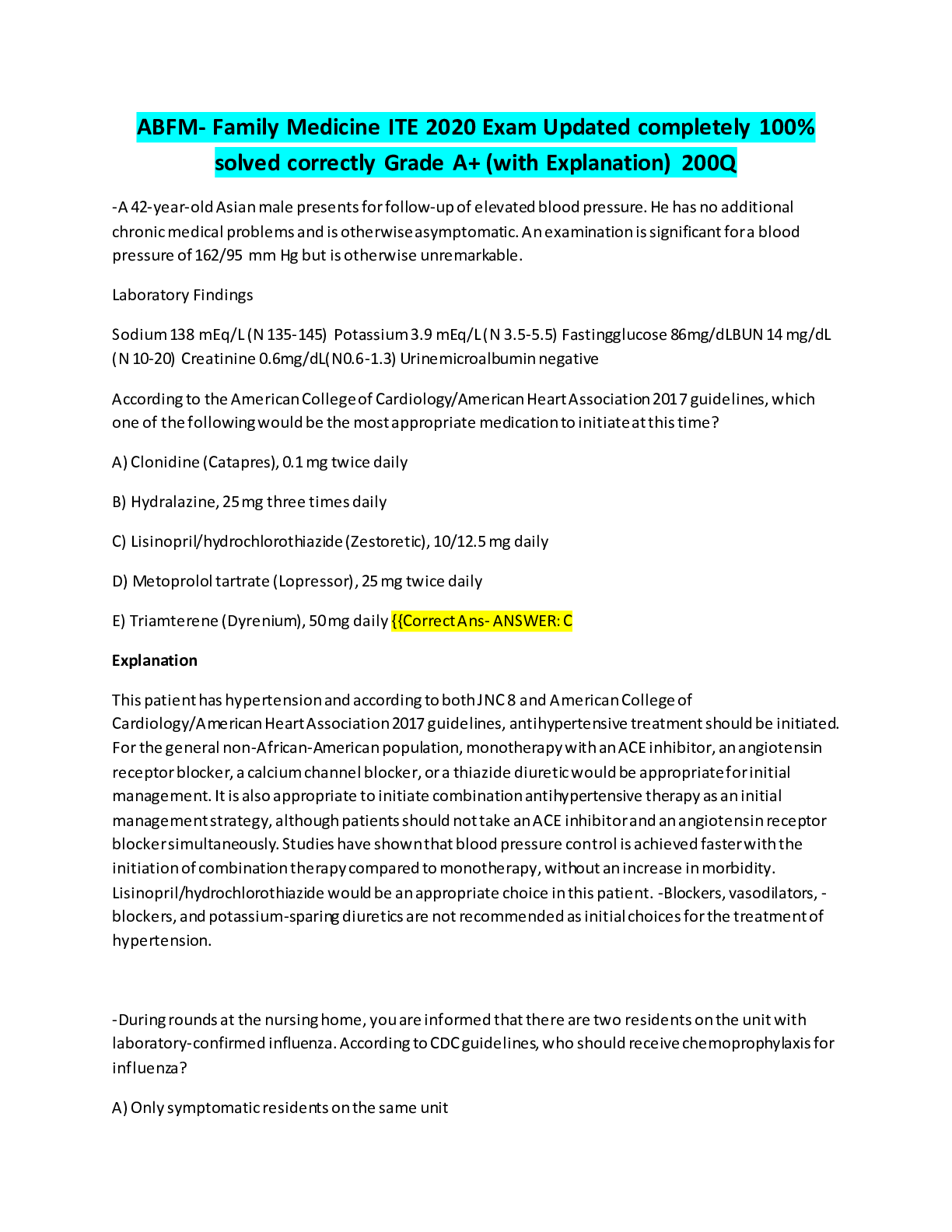
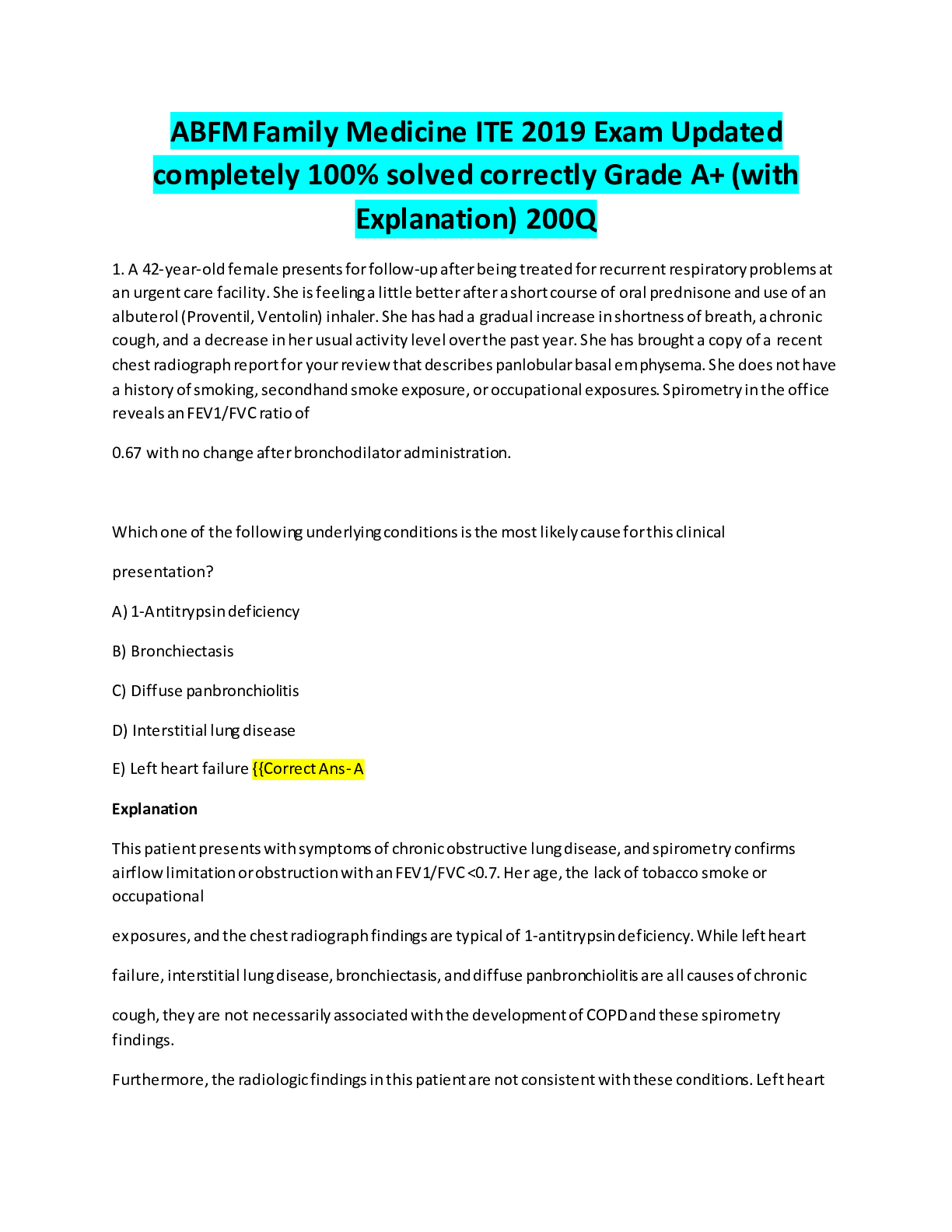
 ITE 2018.png)
